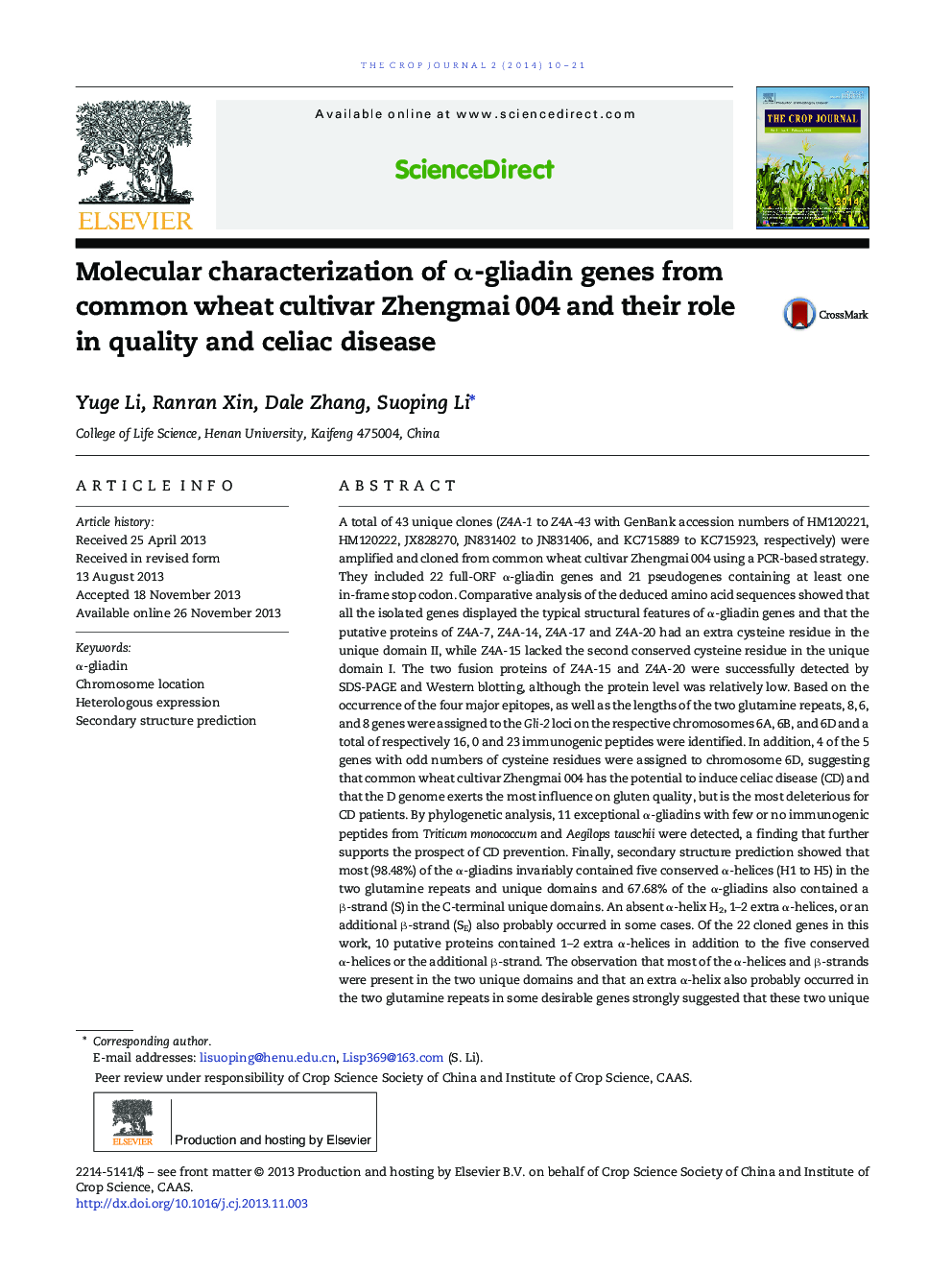| Article ID | Journal | Published Year | Pages | File Type |
|---|---|---|---|---|
| 2079558 | The Crop Journal | 2014 | 12 Pages |
A total of 43 unique clones (Z4A-1 to Z4A-43 with GenBank accession numbers of HM120221, HM120222, JX828270, JN831402, JN831403, JN831404, JN831405 and JN831406, and KC715889, KC715890, KC715891, KC715892, KC715893, KC715894, KC715895, KC715896, KC715897, KC715898, KC715899, KC715900, KC715901, KC715902, KC715903, KC715904, KC715905, KC715906, KC715907, KC715908, KC715909, KC715910, KC715911, KC715912, KC715913, KC715914, KC715915, KC715916, KC715917, KC715918, KC715919, KC715920, KC715921, KC715922 and KC715923, respectively) were amplified and cloned from common wheat cultivar Zhengmai 004 using a PCR-based strategy. They included 22 full-ORF α-gliadin genes and 21 pseudogenes containing at least one in-frame stop codon. Comparative analysis of the deduced amino acid sequences showed that all the isolated genes displayed the typical structural features of α-gliadin genes and that the putative proteins of Z4A-7, Z4A-14, Z4A-17 and Z4A-20 had an extra cysteine residue in the unique domain II, while Z4A-15 lacked the second conserved cysteine residue in the unique domain I. The two fusion proteins of Z4A-15 and Z4A-20 were successfully detected by SDS-PAGE and Western blotting, although the protein level was relatively low. Based on the occurrence of the four major epitopes, as well as the lengths of the two glutamine repeats, 8, 6, and 8 genes were assigned to the Gli-2 loci on the respective chromosomes 6A, 6B, and 6D and a total of respectively 16, 0 and 23 immunogenic peptides were identified. In addition, 4 of the 5 genes with odd numbers of cysteine residues were assigned to chromosome 6D, suggesting that common wheat cultivar Zhengmai 004 has the potential to induce celiac disease (CD) and that the D genome exerts the most influence on gluten quality, but is the most deleterious for CD patients. By phylogenetic analysis, 11 exceptional α-gliadins with few or no immunogenic peptides from Triticum monococcum and Aegilops tauschii were detected, a finding that further supports the prospect of CD prevention. Finally, secondary structure prediction showed that most (98.48%) of the α-gliadins invariably contained five conserved α-helices (H1 to H5) in the two glutamine repeats and unique domains and 67.68% of the α-gliadins also contained a β-strand (S) in the C-terminal unique domains. An absent α-helix H2, 1–2 extra α-helices, or an additional β-strand (SE) also probably occurred in some cases. Of the 22 cloned genes in this work, 10 putative proteins contained 1–2 extra α-helices in addition to the five conserved α-helices or the additional β-strand. The observation that most of the α-helices and β-strands were present in the two unique domains and that an extra α-helix also probably occurred in the two glutamine repeats in some desirable genes strongly suggested that these two unique domains are the most important regions for the function of α-gliadins, although the glutamine repeats would also contribute in some cases.
